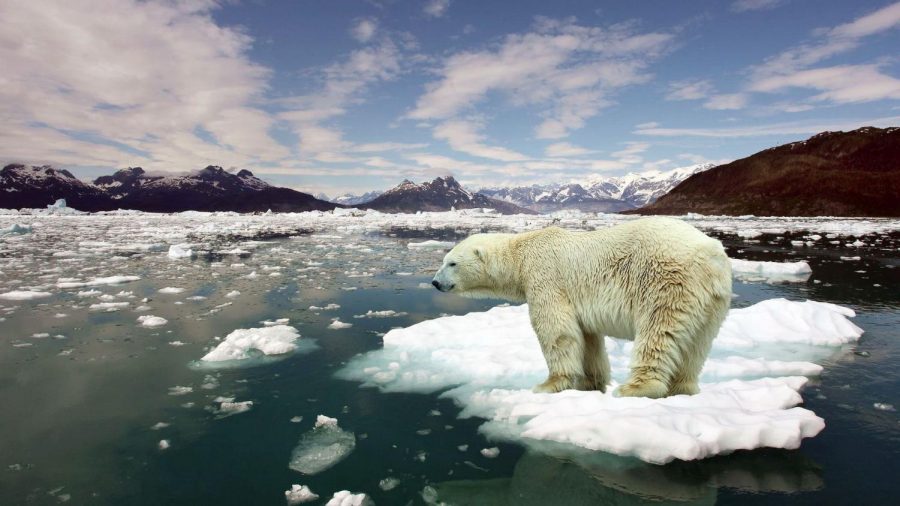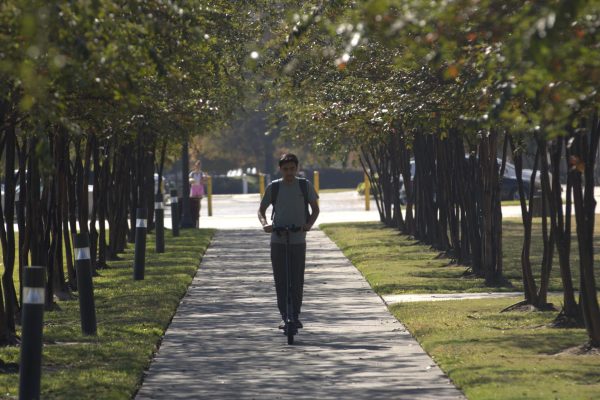Climate change is not something to dismiss
News about climate change and global warming are not new to the people of the U.S. Besides being one of the most common and highly publicized global issues, very little is being done for climate change here.
Because this topic is highly politicized, an initiative for green energy is never fully appreciated.
The U.S. Department of Energy has initiated a “Save Energy Save Money” program.
Under this program, the department tries to persuade people to utilize geothermal energy, solar energy and electrical energy (electric cars) instead of other non-renewable energy sources like coal, natural gas, petroleum and other organic matter.
In spite of these kinds of initiatives, green energy is not replacing conventional energy in a manner that would result in a significant decrease in the threat of global warming.
This is resulting in rapid degradation of environmental stability, or what we call climate change.
Melting ice caps, ozone layer depletion, decreased air quality, global warming and rising sea levels are some examples of the impact of energy sources that cause the greenhouse effect.
Greenhouse gases like fluorinated gases (CFCs, HFCs HCFCs) and carbon dioxide, when deposited more than required in the air, absorb heat from the sun.
This results in the over-heating of the globe, causing other threats to the environment, the existence of human life and biodiversity.
The effects of global warming have been visible for many decades now.
According to the U.S. Department of Energy, global average temperatures have increased more than 1.4 degrees Fahrenheit over the last 100 years.
It is projected to rise between two and 12 degrees Fahrenheit by the year 2100.
The sea level is also rising at a rapid rate.
In the last century, it was seen to increase by seven inches.
However, in this century, it is predicted to rise by 1.5 to 3 feet.
This will cause stronger and more frequent storms.
Ozone layer depletion increases the exposure to UV rays, which in turn causes complex mutation problems and even skin cancer in human beings.
Melting ice in the arctic has a potential threat of releasing viruses and pathogens the human race has never faced before.
The animal habitats found in many different climates (especially the tundra) are at risk.
Islands have been submerged in the seas, and high altitude lakes with glaciers are feared to burst.
Unusual wind patterns south of the U.S. have caused hurricanes to be more violent.
The impacts of climate change are not limited to these and are well known to most of us.
However, stabilization of the global climate is still being ignored by big industries, politicians and even individuals.
The global rate of carbon emission is increasing by the day, the oil quest in the arctic has started and is increasing at a rapid rate and no one cares about the polar bears.
Green energy cannot yet meet the efficiency of natural gases and petroleum and is the major reason people do not switch to greener energy sources.
However, in places like the EU countries and China, great efforts are being made to switch to greener sources of energy and, in most parts, they are seeing extraordinary success.
Even in the U.S., California has made and implemented laws that focus on recycling.
The use of wind energy, solar energy and geothermal energy in various sites in different states have been successful to replace carbon-emitting sources to some extent.
So, it is not totally true that green energy is not worth using.
Also in the U.S., this topic is used as political propaganda rather than a global issue.
This is also why green energy initiatives are frowned upon by many people.
The U.S. Department of Energy highlights that the most carbon emission in the states is done by the industries that produce electrical energy (66 percent).
However, we can achieve the goal of replacing these non-green sources by devoting more time and resources to research on the use of these sources.
So, if the aforementioned sources of energy would be used to produce electricity, then that may be a big step toward a healthier and less chaotic future.




